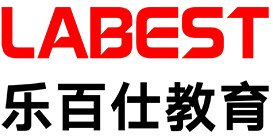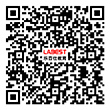
Primary school science experiment box: How to use primary school science experiment equipment?
Published:
2022-07-04 13:45
Source:
Primary school science experiment box: How to use primary school science experiment equipment?
Science education is the education of imparting basic scientific knowledge, experiencing scientific thinking method and scientific inquiry method, cultivating scientific spirit and attitude, establishing complete scientific knowledge view and values, cultivating basic scientific research ability and applying science and technology. Compared with other subjects, science teaching experiment is a more important teaching method. With the development and sublimation of the concept of primary school science education, science experiments are becoming more and more important, so primary school science experiment box: how to use primary school science experiment equipment?
Primary school science experiment box: How to use primary school science experiment equipment?
1, the use of good experimental instruments, the key is to choose reasonable instruments, the operation method to be correct.
In the experiment, let the students know which instruments to use to complete the experimental task, as well as the correct operation method, is the basic requirement of the experiment class. For example, when using a spring dynamometer, you need to choose the right range to measure the gravity of an object. There are roughly three kinds of spring dynamometer equipped in the experiment, with measuring ranges of 5N, 20N and 50N respectively. Science and education version of "Measuring the size of the force" 1 class, ask students to choose several objects, with the spring dynamometer to measure its gravity. Most students choose rulers, pencil cases, bags and other school supplies. Before using these three kinds of spring dynamometer, the measuring range and using method are introduced respectively. An important step here is to estimate the gravity of the object being measured in order to choose a suitable measurement range. Although it was said that a large range should not be exceeded, one student asked, "We can choose a dynamometer with a large range. These items can be measured, but when we measure a ruler, we can't determine what gravity is." It suddenly occurred to me that the measuring range is important, but it is also necessary to consider the smaller scale value of each spring dynamometer, especially when measuring objects with low gravity, to consider the more appropriate spring dynamometer, so that the experimental results can be more accurate and scientific. In summarizing the selection and operation of the spring dynamometer, the student said: "The gravity of the measured object should not exceed the range of the spring dynamometer, and smaller scale values should be considered if necessary; Check whether the spring dynamometer is intact; When reading, look perpendicular to the ruler; Wait until the indicators stabilize before reading." The author spoke highly of the student. The reasonable use of experimental instruments reduces the error and makes the experimental results more accurate. Only by choosing the appropriate experimental equipment and mastering the correct method of using the experimental equipment can the students complete the learning task well.
2. It takes time to use good experimental instruments and good experimental classes.
Scientific inquiry is not a simple verification of a fact or conclusion, but a complete inquiry process through experiment, observation, discussion and so on, so that students can find abundant facts, which requires enough time. When time is guaranteed, students can use the laboratory equipment to do in-depth research. When teaching the scientific version of "Shadows in the Sun," it was not practical for students to measure the shadow changes of objects in the classroom throughout the day, so the author measured the shadow changes of a pencil in the sun every five minutes, four times in total, and it took 20 minutes to complete the experiment. Students experience the shadow changes, and then show the shadow changes in a day through the animation courseware, which not only reflects the reality, but also allows students to experience the experiment process. It ensures the time for students to do experiments, carries out exploratory learning, obtains new knowledge and improves learning efficiency.
3, limited experimental equipment, can make teaching AIDS to complete the teaching task.
In primary school science classroom teaching, make full use of teaching AIDS, change abstract to intuitive, passive to active, can not only give full play to the main role of students, but also cultivate students' innovation ability, get twice the result with half the effort. When teaching the science edition of "Designing and Making Little Race Cars", the author asked the students to make a race car with various materials prepared before class. Some boys have used parts from their toy racing cars to build battery-powered racing cars. It's really amazing. Up until now, we've only talked about using recoil and spring as power. Many students are interested in making racing cars and they are highly motivated to learn. The use of student-made AIDS stimulated their interest in learning. In primary school science teaching, students' interest is the source of motivation to learn the subject well. We need to treat scientific sentiment as a separate goal, on a par with the delivery of scientific knowledge and the development of capacity. Therefore, in classroom teaching, we should focus on stimulating students' interest in learning, create operational situations for students, use learning tools to create reasonable and timely hands-on activities, and provide hands-on opportunities for students, which will make learning natural and easy.
Related news
Copyright © Jiangsu LABEST Education Co., Ltd Address: Building 2, Strait Cloud Valley Science Park, No. 98, Shuangzha Road, Jianye District, Nanjing Phone:025-58769595
Website:www.jslabest.com ICP Record No.: SUICPB No. 2020054929-1 Powerby:300.cn SEO

